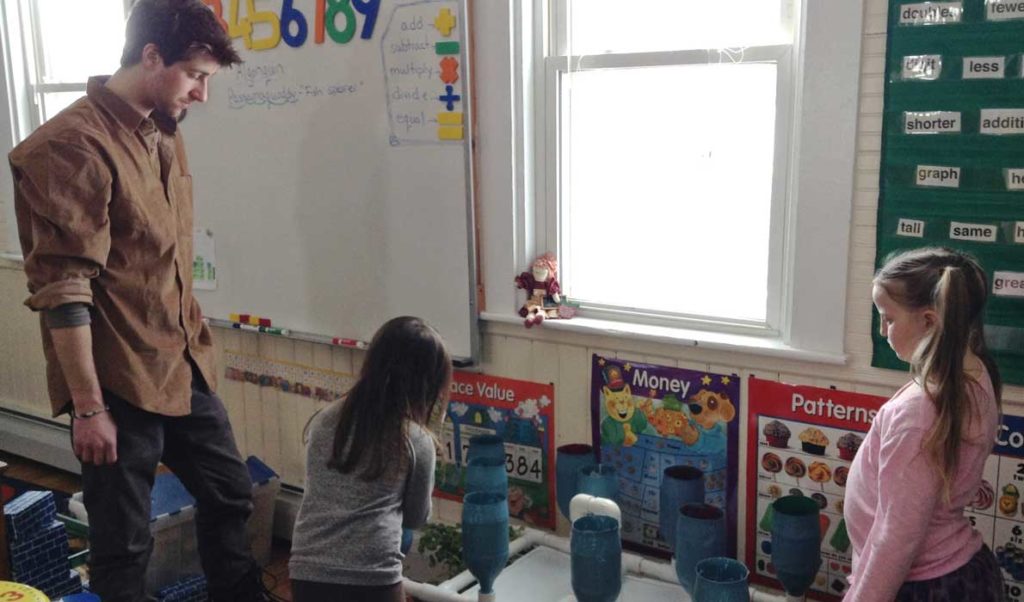Luke Milardo is an Island Fellow, a participant in a two-year service program operated by AmeriCorps and the Island Institute, doing community development work on islands and remote coastal communities. He is serving on Frenchboro (Long Island) off Mount Desert Island.
This fall, the Frenchboro School studied island history and ecology. As the makeshift social studies and science teacher at the two-student school, I tried to design lessons that would put the kids into the wildness of their island’s past. I wanted to share with them the adventures of the Passamaquoddy who canoed eight miles to fish here and the struggles of the first white settlers—some direct ancestors of the second grader—who developed Frenchboro’s year-round industry and community.
I wanted to show how generations of millers, farmers and fishermen came to inhabit this place, how drastically times have changed, and how these two girls themselves, clad in fluorescent cheetah print and pigtails, are shaped by history in an important way.
After a couple weeks I came to my senses. That many words about history were too many for kids who only just learned the word “history” itself. They liked some of it. Native Americans heaping shells on the beach. Photographs of barefoot kids in their own schoolhouse. Treasure sunken off Eastern Beach. But I felt I had failed them. The island’s identity and past had not hit them with the impact I anticipated.
And then it was time for ecology. Stories of the past drifted away as we began spending afternoons searching for leaves in fields and identifying life in tide pools. This was the stuff they liked. The second grader, having spent all her life here, could lead us straight to a secret blueberry patch and taught me the art of distinguishing between spruce and fir needles. In time we planted an indoor garden and the kindergartner—whose family harvests enough to last five winters—knew more about seedling care than I ever did.
I realized that these girls were living and learning from their island in the same way their ancestors did centuries before them. They chose to embrace the world of the living, a world invariably shaped by the dead yet at heart unchanged through time, and in this way lived their island’s history with more authenticity than the words of a book could hope to suggest.
We walked the fresh, snowless paths near school and the girls collected treasures as we went. One showed me round stones she carried in the belly of her shirt, like people used to collect for city roads, she said. The other bowed a branch and asked if she could keep it for playing Passamaquoddy in our cardboard canoe. I couldn’t help but press to see what more they remembered from history. It wasn’t a ton, but it was enough.
Understanding that the island has existed beyond their short lives, beyond the first European ships and Passamaquoddy canoes, gives perspective to the culture they know. However, their interest in ecology and the skills they’ve developed for their natural world suggest that maybe they had already understood, without history’s declaration of all time.
Maine islands, I’ve learned, are entrenched in history. We are concerned with preserving the character of these communities by remembering the stages of their tumultuous passages: the rise and fall in populations, the ins and outs of political drama, the bloom and wilt of reputations. In this way we believe we might be more prepared to face future changes.
Maybe.
I’m not an islander and I won’t pretend to know much about it. But what I forgot or didn’t understand and what took a kindergartner and a second grader to teach me is that history goes on and on and so long as there’s a little kid playing in the woods or wading in a tidal pool some culture is preserved. And even when someday there’s not, it’ll be but another stage in island history, and that will be OK.





